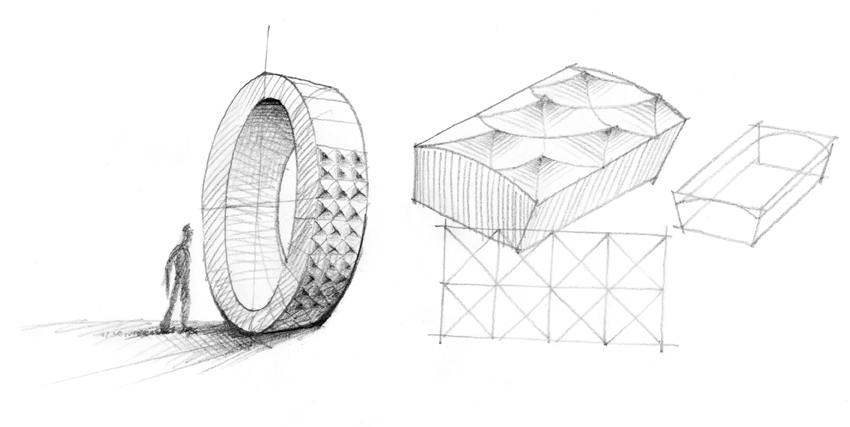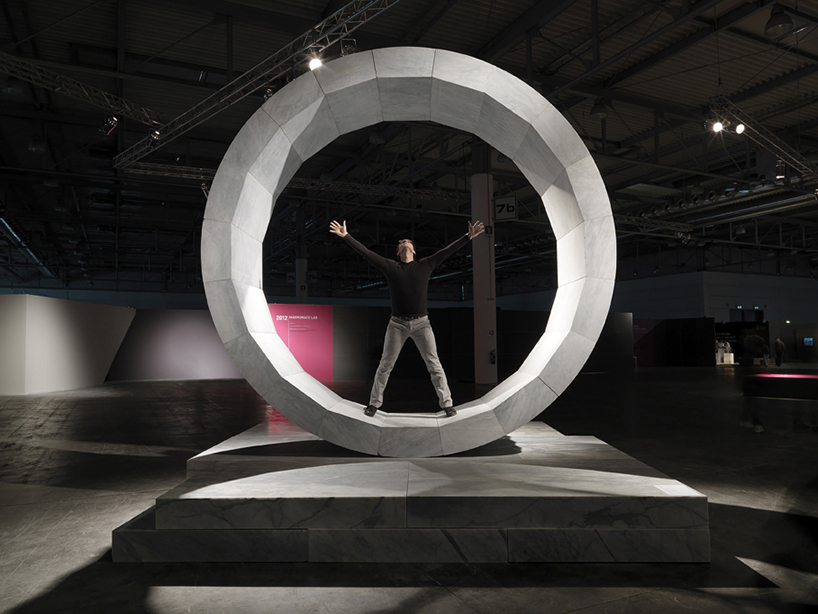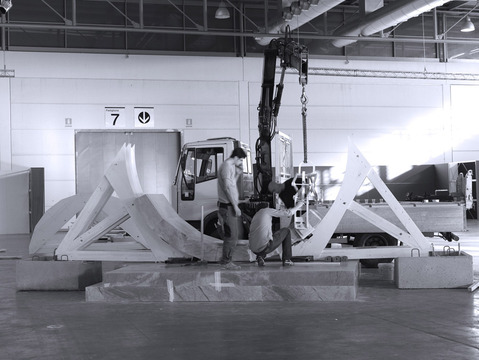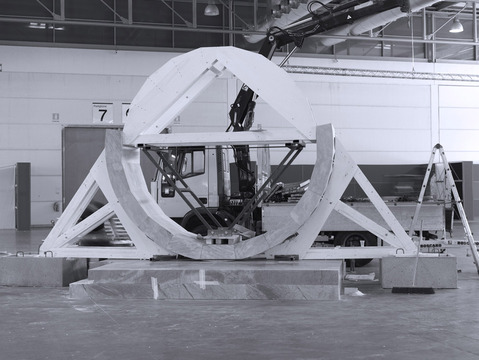The circle is complete
December 21, 2012
Installations for design exhibitions destined for architectural applications are generally aimed at illustrating possible novel uses for research relating to materials, working techniques and formats. The most common presentational strategy is to use one of two methods: the creation of a fragment as part of a larger full-scale work, or of a micro-architectural exhibit, in the form of a complete construction, even if its dimensions are much-reduced. In both these cases, however, the gap with the dimensional and spatial reality of real architecture makes it difficult to see beyond the concept of a small-dimensional installation, however effective it might be.
The work of Raffaello Galiotto and Alessandro Serafini in collaboration with Lithos Design under the heading Stone Gate - The circle is complete, set up for the 47th Marmomacc, fits into neither of these two categories. Indeed, in this case we are looking at neither a serial fragment applicable in a modular fashion to a complete building, even if its matrix is a stone mega-ashlar that is repeated in order to generate a complete geometrical pattern, nor a construction that produces a spatially utilisable final format, even if the principle of its creation undoubtedly belongs to the discipline of architecture. Furthermore, leaving aside the question of discipline, it is not a pure design item either, since it has no real practical application.
However, it certainly represents a challenge to the order of building, since in its creation it has cut across all the aspects that it denies, has interpreted them and pulled them together to finally produce a symbolic object which has an impressive ability to communicate. That same process of simplification and reduction to essence, from the original tube to the ring, from an accomplished shape to its matrix, that we find so frequently in the classical architecture of the past (often for practical and "prosaic" reasons of sustainability), has helped to bring about the final format.
The closing of the stone circle, an apparent static "nonsense" which in its decontextualised state defies gravity, has immediately been recognised by visitors as a symbolic object endowed with an extraordinary and mysterious empathy that can perhaps be attributed to its obvious "unnaturalness". The almost invisible artifice of making the stretched cables hold the stresses of the enormous accumulation of forces that would otherwise be borne by a wall mass that is absent here, has transformed the demonstration exhibit into an absorbing instrument of perceptive, visual and tactile experience.

The installation Stone Gate in relation to human figure
A simple object that is also as complex as this one can only be created by the osmosis of expertise that is communicated in two directions, from concept to completion then back to concept again until its realisation in a logical and clear format, as should be the case for any truly creative experiment. The synergy between an excellent project team, a designer and an engineer, with a company that is also excellent, with the ability to take on and deal with the challenge, and to master a material that is ancient but always worthy of reinvention, has produced through this experiment a truly novel form of communication.
Vincenzo Pavan - a researcher of the expressive properties of construction materials and the curator of the 100% Gravity exhibition - comments on the STONE GATE project created for the exhibition. This is a reflection that moves beyond the theme of the relationship between design exhibit and real architecture, to trace the evolution of a conceptual idea through to its realisation in the form of an object of enthralling symbolic value.
back to top print
Post-it
ISSN 2239-6063
edited by
Alfonso Acocella
redazione materialdesign@unife.it

